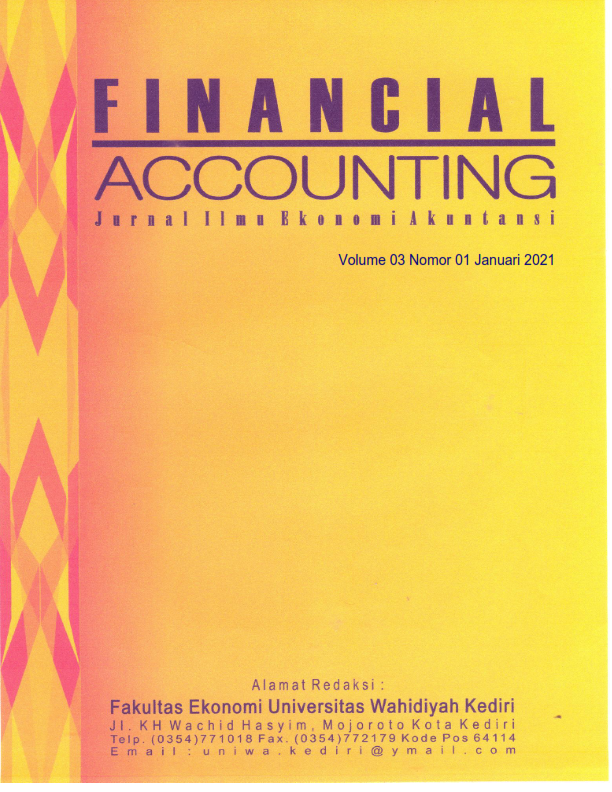PENGARUH PERPUTARAN MODAL KERJA TERHADAP PROFITABILITAS PERUSAHAAN DI PT. JAGUNG SUMBER REJEKI WONOREJO KABUPATEN PASURUAN
Keywords:
Working Cap ital Turn Over, ProfitabilityAbstract
With the increasing number of animal feed factories in Indonesia, of course there are many competitors that have sprung up to be able to survive in the competition for corn suppliers in this competition. PT. Jagung Sumber Rejeki must be able to carry out the functions of management and fund management properly. This study aims to determine the effect of working capital turnover on profitability at PT. Jagung Sumber Rejeki 2015 - 2019. The independent variable in this study is the turnover of working capital. For the dependent variable in this study is Ptofitability (ROI). The data for this study were taken from the income statement and balance sheet of PT. Corn Sumber Rejeki. The analysis model used to test the research hypothesis is simple regression correlation. The results of this study indicate that based on the calculations carried out, the magnitude of the correlation between working capital turnover and profitability variables is obtained, namely the correlation value r = -0.0251, this means that there is a very weak relationship between working capital turnover and the profitability of PT. Corn Sumber Rejeki. From simple regression analysis, the equation y = 0.2345 + 0.0276 X is obtained. The y equation is obtained from the value a = 0.2345 and the value b = 0.0276. From this equation, it means that there is a positive influence, it is very weak between the two variables. The adjusted value of r ^ 2 is -0.0251, the coefficient of determination is r ^ 2 = 0.0006. This value means that, 0.0006 independent variable X can explain the dependent variable Y. From the regression results and r ^ 2 above can be used by treasurers Pt. Jagung Sumber Rejeki to assess the level of profitability of the company.From the results of the t test, it shows that the value of t_hit <t_tab -0.0753 <3.182, then H_0 is accepted, H_1 is rejected. So it is said that, has no effect on variable X on variable Y with a significant level of 5%.




















